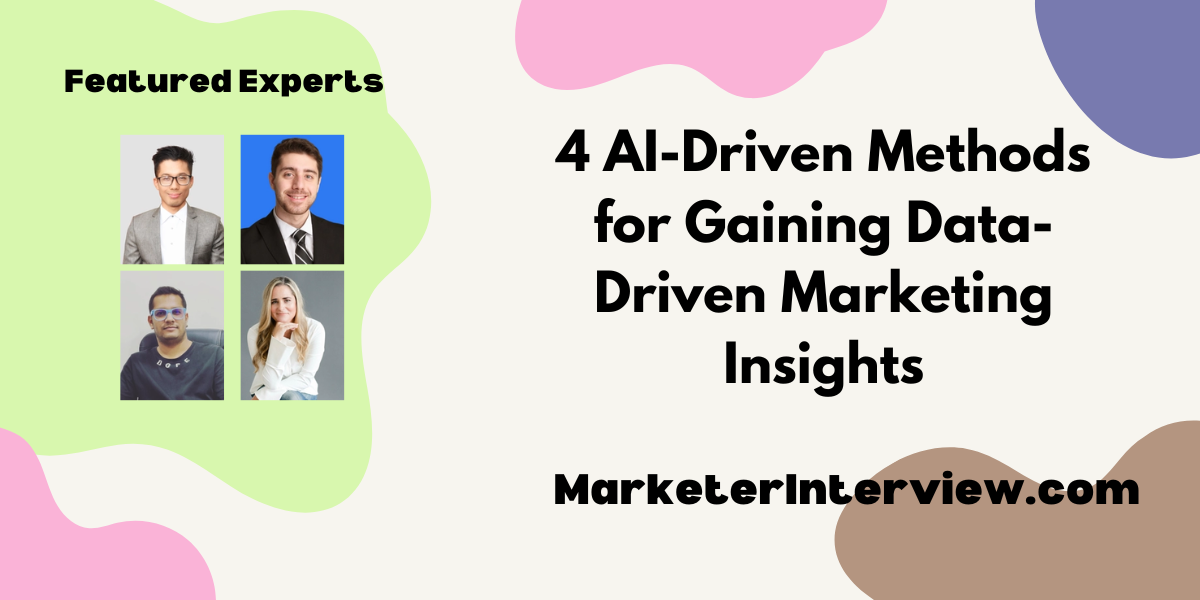4 AI-Driven Methods for Gaining Data-Driven Marketing Insights
In the quest to harness the power of artificial intelligence for sharper, data-driven marketing strategies, we’ve gathered insights from top industry professionals including a growth leader and C-suite executives. They share one specific method each, from leveraging predictive analytics in email campaigns to utilizing AI for micro-segmentation success. Here are four proven AI techniques that have transformed their approach to marketing.
Want to get quoted in MarketerInterview.com content just like this? Apply to become a contributor today!
Contents
Leverage Predictive Analytics for Email Campaigns
AI is a game-changer for generating data-driven marketing insights. It can help marketers collect, analyze, and interpret large amounts of data from various sources and channels.
One specific method for utilizing AI in this regard is to use predictive analytics. Predictive analytics is the process of using AI to forecast future outcomes and trends based on historical and current data.
For example, I used predictive analytics to optimize my email marketing campaigns, segment my audience based on their demographics, test and measure the performance of my emails, and adjust them accordingly.
By using predictive analytics, I was able to increase my open rates, click-through rates, and conversions. My bounce rates, unsubscribe rates, and spam complaints were reduced significantly. Predictive analytics helped me deliver more relevant and engaging content to my audience and achieve my marketing goals.

Bhavik Sarkhedi, Growth Head & CMO, Content Whale
Analyze Sentiment on Social Media
Employing AI-driven sentiment analysis on social-media interactions offers unique insights. By analyzing language patterns, we discern customer sentiments towards products or services. For instance, I’ve observed a surge in positive sentiment following a product-update announcement, indicating increased customer satisfaction. This method helps in tailoring marketing strategies, resulting in higher engagement and conversions.

Karin Conroy, Founder and Creative Director, Conroy Creative Counsel
Predict Customer Behavior with AI
One specific method I’ve found successful is using AI for predictive customer behavior analysis. This involves AI algorithms analyzing large sets of customer data—like past purchases, browsing history, and engagement patterns—to predict future buying behaviors. For instance, I used this method to identify which customers were most likely to buy a new product. The AI helped segment the audience based on their predicted interest in the product, allowing for highly targeted and personalized marketing campaigns. The result? A significant increase in conversion rates and more efficient use of marketing resources. This method works well because it’s proactive, not reactive. It anticipates customer needs and interests, allowing for more timely and relevant marketing efforts.

Anup Kayastha, Founder, Serpnest
Utilize AI for Micro-Segmentation Success
In our tech company, we’ve had incredible success with AI-driven micro-segmentation. We feed our AI system a range of data, e.g., browsing behaviors, purchase history, etc., and the AI dissects this information to create highly specific customer groups. This helps us tailor our marketing to suit each micro-segment’s unique needs and preferences. Consequently, we’ve seen an uptick in customer engagement and higher sales, as our ads resonate more personally with our potential customers. It’s been a real turning point for our marketing strategy.

Abid Salahi, Co-founder & CEO, FinlyWealth
Want to get quoted in MarketerInterview.com content just like this? Apply to become a contributor today!






